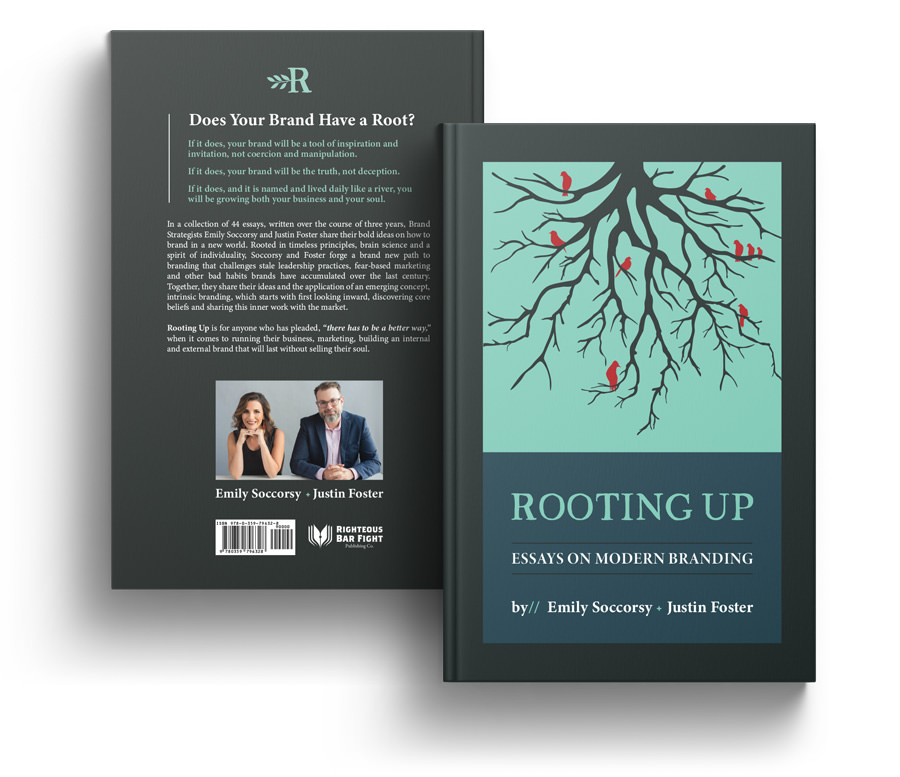Filed Under: 21st Century Branding
By Emily Soccorsy + Justin Foster
Some of the strongest branding advice we give to clients is this: when building a brand don’t add more pretense.
You may nod your head at this, hit Like or Share, or forward to your friend in marketing, but are you too comfortable, too clad in precious pretense, to take a full-frontal look at what that means for you? And for the brand(s) you represent?
Do you extol the virtues of being “real,” while being sure every photo you ever post of your company or of yourself is perfectly framed, filtered and fixed?
Do you accept that “knowing your why” is important, then avoid trying to determine it and just run Facebook ads instead?
Consider.
Branding has always been about perception.
But it’s only in the last five years the idea of branding has evolved. Now branding is about having your perception align with and accurately reflect the reality of you, of your organization, in total. That means mess-ups and magnificence, stellar IPOs and failed ventures. All of it.
All of this reality makes up your brand. Ask Wells Fargo. Or GM. Or Uber.
Perfection is a myth. Worse that that, our belief in perfection creates a cancer inside of us, and inside of our organizations.
Perfectionism also creates a lot of bad leadership habits. Mostly because it brings shame to simply being human. We humans are messy. We make mistakes. We fail. All of this becomes part of your brand story when you let go of the perfection bar as a standard form of measurement.
The idea of perfection is notoriously set in motion through propagandizing. This command-and-control approach obsessively seeks to craft the narrative and spin the message. But in this hyper-connected world, building a brand off of this kind of primping and polishing is not sustainable. It simply makes you look desperate and out of touch.
Here are a few specific tips to consider:
- Truth is the best brand strategy. This starts with a leadership team that knows what they stand for and consistently holds to a set of beliefs and values, even under great pressure. When you have a leadership team that practices what they preach, you don’t have as much worry about public perception.
- The story is in the mess. When you live out your brand in a real and raw way, you are inviting people to your story. When you hide the messiness of being human, you hide all of the interesting aspects of your story.
- Innovation comes from failure. Want to build a brand as an innovator? Then be public about your failures. The Wright Brothers, Thomas Edison, JetBlue, Google all built brands by embracing failure as part of the journey to innovation.
So the choice is yours as leader.
You can continue to give lip service to the idea of having a purpose-driven brand while still trying to be the most popular person at the party.
Or …dig in to yourself and your brand to truly understand what is actually the most important thing you need to convey to the world. Being real isn’t about giving you permission to puke your life out to the world. Rather, it gives you the opportunity to find the most significant of your ideas and share that — vulnerabilities and victories — because if you don’t, it will eat you alive.
If you do share that truth, it may just change the world. For real.
